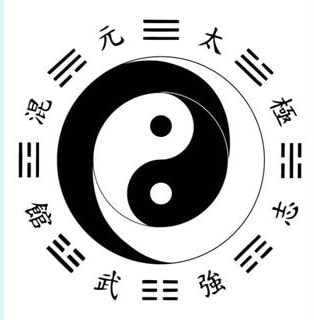
In answer to questions concerning Neigong practice:
"What is the difference between the Wuji and standing we do in Neigong practice and that of Taiji-Qigong? is there a difference? When do we use one or the other?"
This is my answer based on my perspective at this time (which means it might change as we learn and experience more).
I see two approaches to standing.
(1) as martial and Qigong practice. This is the Wuji, Santi, Mabu standing as taught by most Taiji, Qigong, and Gongfu teachers/lineages. This would be Hugging the Tree, Standing Pole, Kung Fu Temple Stances, Yiquan Zhan Zhuang, etc... The goals of this type of teaching are relaxation, meditation, improved body awareness, improved mental awareness, and improved Qi flow, all of which lead to better health (Qigong) and martial effectiveness (Gongfu).
(2) as Neigong practice. The goal of Neigong is to activate and cultivate Jing and convert it to Qi. In the context of our training, Neigong includes Daoyin, which is interpreted as guiding and pulling. The conversion of Jing to Qi happens naturally anyway and is quickened via Taiji/Qigong practice. Neigong/Daoyin is just an intense amplification of this natural process. So, compared to the goals of Qigong-Wuji standing, the goal of Neigong is to intentionally activate and cultivate the Jing-to-Qi process. Which is why we condition the body, to be able to withstand the intense energy flows and then position the body so that Qi flow is efficient and intentional. In Qigong standing the goal is to relax and maintain frame and develop mindful awareness. In Neigong, the goal is to adjust the body and guide the energy flow such that it activates Jing. When that happens we often get the shakes, a sure sign that Jing is firing.
In a nutshell, Qigong standing is meditation. Neigong standing is Tantra.
In Qigong standing, we stand in Wuji and/or Santi and relax while maintaining frame. The body is soft and relaxed and allowed to move gently as will naturally happen, as if one is standing in water. We are nurturing our inherent energy and mindfulness.
In Neigong standing, while we are relaxed, in fact intentionally practicing Fang-Song to release energy, we are also holding our bodies a bit more rigidly in the attempt to direct energy down to the ground on the outside channels or our legs, and back up via the inside channels. Thus, we are setting up a differential in our bodies between the slightly rigid and fully relaxed. This differential acts much like two poles in a storage battery to allow the Jing to fire. Neigong standing is typically done in Mabu and Wuji. Our intention is to intentionally activate Jing so that it is converted to Qi.
Next Question: "If we are turning our Jing into Qi, doesn't that leave our Jing depleted?"
My answer:
Jing, Qi, and Shen are all the same thing, ultimately. They are all energy vibrating at different frequencies. If you think about it, so is everything. All things are just different vibrations of the same thing: Hunyuan (Primordial Energy). All things are Primordial Energy. Jing is equivalent to the physical body, Qi the energy body, Shen the spiritual body. The conversion of Jing to Qi is a natural process. Neigong quickens that process. I don't think it increases the speed of the process, or necessarily depletes our natural store of Jing. What depletes Jing is worry and stress, dehydration, excessive sexual activity, lack of sleep, alcohol, bad food. I think Neigong increases the intensity of the process and our awareness of the process equally. In fact, at a certain point our awareness of the process is the process. Also, I believe we have far more potential energy available to us than we ever actually access and process through internal practices. That is why the sudden awakening of Kundalini has been a devastating experience for some people. They were not physically nor mentally prepared for it.
We replenish Jing as we replenish Qi: through Qigong, diet, exercise, proper sleep, controlling emotions, conserving sexual activity, engaged living. Since Neigong practitioners are working with all these energies more intensely, we should have a program of strength training, stretching, and mindful movement. In particular to replenishing Jing, I think care of the physical body is crucial. We should be engaged in some form of strength training, something more than that offered by Taiji-Qigong and/or Yoga: lifting weights, running, hard-style martial arts, Crossfit, HIIT, etc... We should be very careful with diet and alcohol consumption. We should get ample sleep every night. Jing is related to the physical body, so physical strength is crucial. I emphasize this because so many Taji/Qigong players and teachers do not emphasize or teach this, some even discourage it.
So, I don't think Neigong depletes our Jing. However, our bodies must be strong enough, supple enough, and our mind/intention should be aware enough to be able to deal effectively with the process. I think the results of Neigong training are basically the same as Kundalini awakening, so the same preparations should apply. Strength training, stretching, and meditation prepare the body for the Niegong process. Qigong, diet, exercise, sleep, etc... replenish Qi, which is replenishing Jing.
 RSS Feed
RSS Feed
